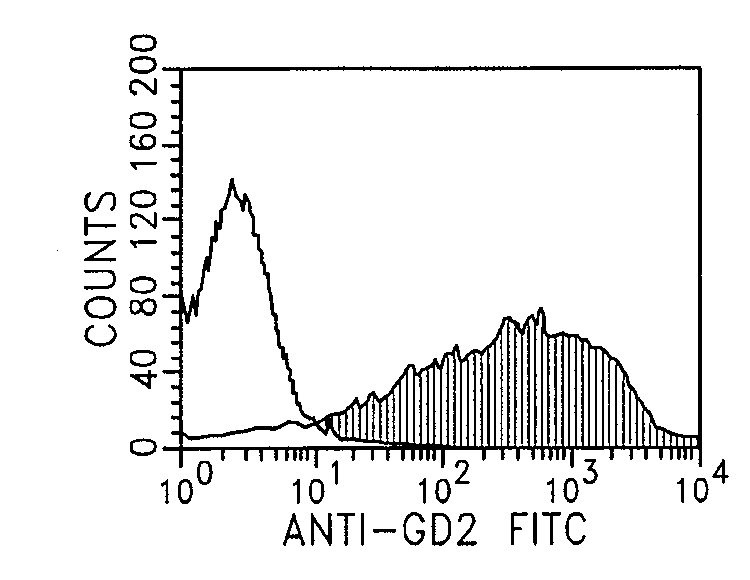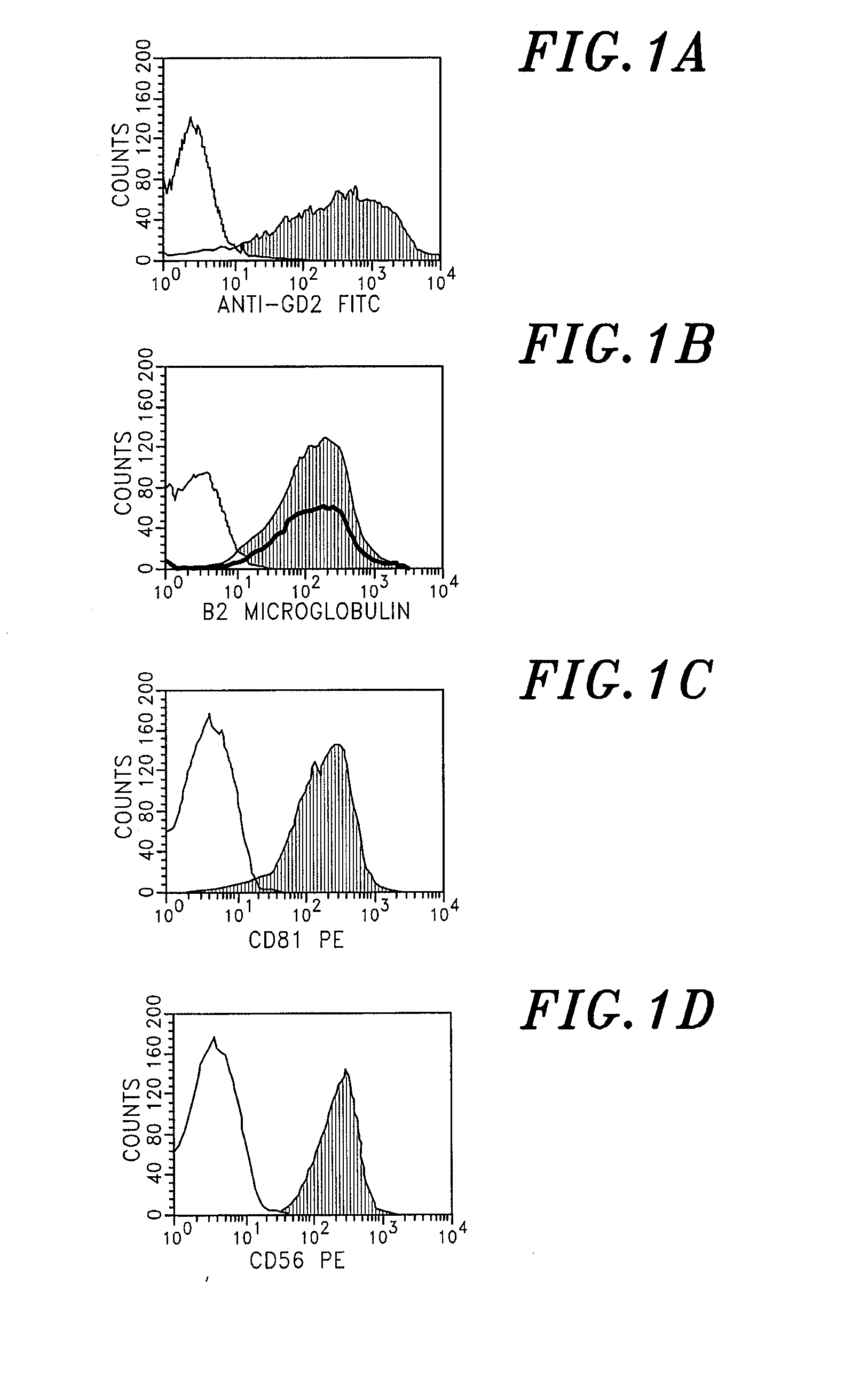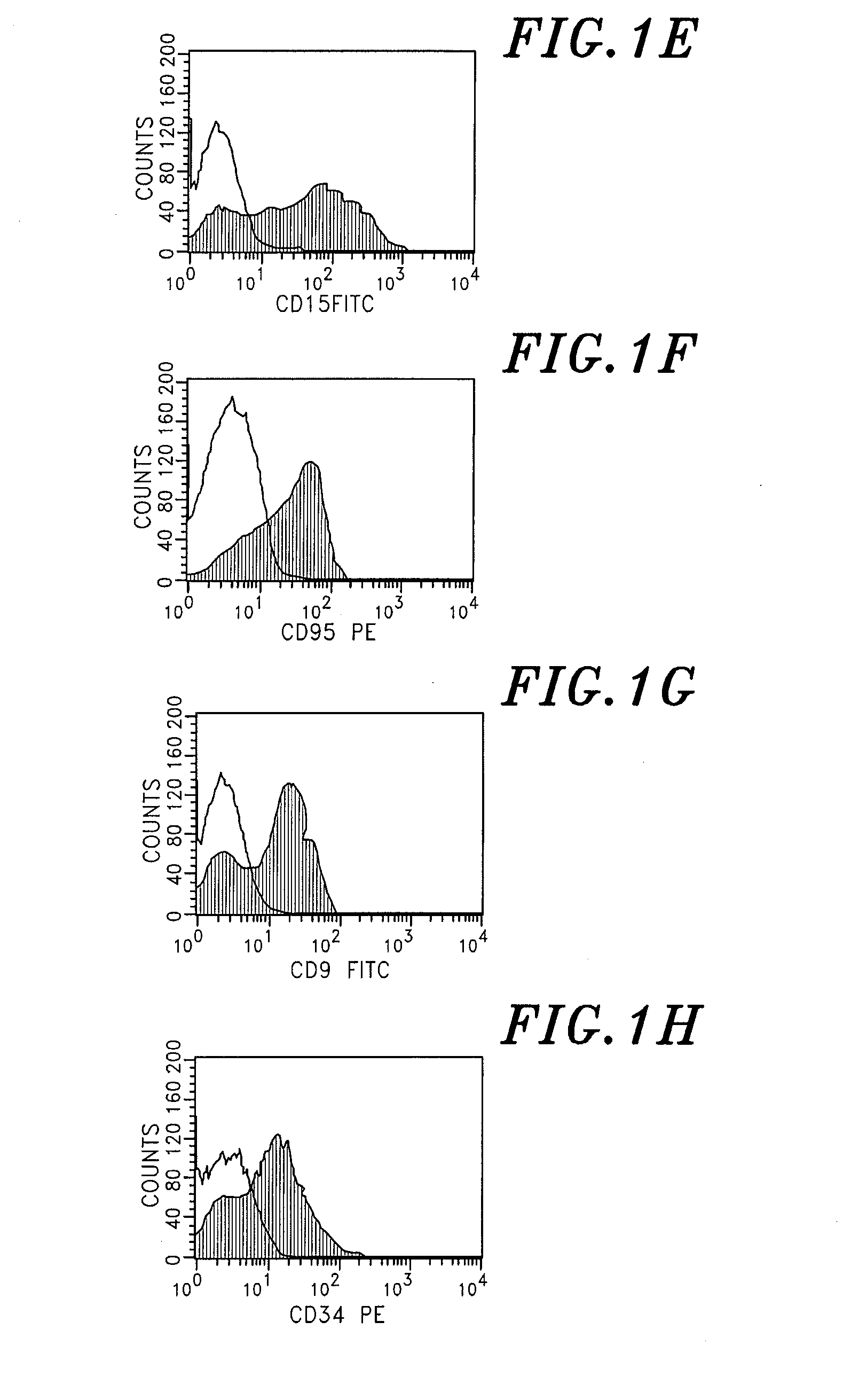Isolation of neural stem cells using gangliosides and other surface markers
a technology of neural stem cells and surface markers, which is applied in the field of isolation of neural stem cells, can solve the problems of flawed previous method of identifying nscs, and achieve the effect of reducing the proliferation of neural transplant cells
- Summary
- Abstract
- Description
- Claims
- Application Information
AI Technical Summary
Benefits of technology
Problems solved by technology
Method used
Image
Examples
example 1
Identification of Positive and Negative Neural Stem Cell Markers in Human Neural Stem Cells
[0067]Initially, a human neuronal progenitor cell line was obtained from Michael Young, Ph.D. who obtained it from Clonetics, (Walkersville, Md., catalog number CC-2599). These cells had been obtained from donated prenatal tissue and tested negative for a range of infectious pathogens. Cells were obtained frozen and subsequently grown in tissue culture using a defined medium consisting of DMEM / F 12 high glucose, N2 Supplement (Life Technologies), bFGF (20-25 ng / ml) and EGF (20-25 ng / ml), and L-glutamine. Cells were characterized as multipotent neural progenitor cells based on the ability to propagate over many passages, expression of nestin and Ki-67, proto-neuronal morphology, as well as the ability to differentiate into neurons and glia (Mizumoto, et al., 2001; Young, et al., unpublished data).
[0068]For the present study, cells were initially grown as neurospheres until plentiful, then spher...
example 2
Identification of Neural Retinal Cell Markers
[0075]Stem cells from the neural retina of GFP-transgenic mice were found to express the markers previously shown for brain-derived stem cells. In FIG. 2 the expression of GD2 ganglioside, CD15, and the tetraspanins CD9 and CD81, are shown using flow cytometry.
example 3
Identification of Neural Cell Markers Associated with Differentiation
[0076]The human neuronal progenitor cells (hNSCs) in Example 1 were treated with Fetal calf serum (FCS) to induce differentiation and some of the markers were reexamined. FIG. 3 depicts the influence of these differentiating conditions on the expression of target molecules by hNSCs. In each case the target molecule is shown as solid gray, the isotype control with a fine black outline. The bold outline indicates the profile of the target molecule after hNSCs were cultured in fetal bovine serum (FBS). FIG. 3a shows that CD34 expression increased under these conditions, FIG. 3b shows that CD15 expression fell to control levels, FIG. 3c shows that GD2 ganglioside expression decreased by an order of magnitude, FIG. 3d shows that CD9 expression fell to a lesser degree.
[0077]The expression of certain NSC-specific markers decreased during differentiation, suggesting that these markers are strong markers of “true” neural st...
PUM
| Property | Measurement | Unit |
|---|---|---|
| angle | aaaaa | aaaaa |
| concentrations | aaaaa | aaaaa |
| affinity | aaaaa | aaaaa |
Abstract
Description
Claims
Application Information
 Login to View More
Login to View More - R&D
- Intellectual Property
- Life Sciences
- Materials
- Tech Scout
- Unparalleled Data Quality
- Higher Quality Content
- 60% Fewer Hallucinations
Browse by: Latest US Patents, China's latest patents, Technical Efficacy Thesaurus, Application Domain, Technology Topic, Popular Technical Reports.
© 2025 PatSnap. All rights reserved.Legal|Privacy policy|Modern Slavery Act Transparency Statement|Sitemap|About US| Contact US: help@patsnap.com



